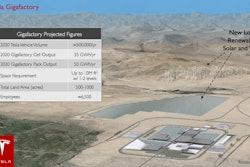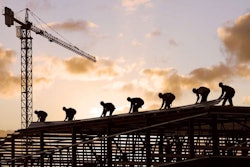
According to a report from Bloomberg, Greenspan, who served as chairman of the Federal Reserve between 1987 and 2006, said Tuesday the U.S. economic rebound from the recession that ended five years ago has been held back by the construction industry’s own slow rebound.
“What we see is that construction is dead in the water,” he said, noting that, unlike the current recovery, every other recovery since World War II “was led by construction or longer-lived assets.”
While Greenspan is certainly correct to point out the role the industry played in the past 12 recoveries since World War II, it’s important to note that none of those recoveries followed a housing collapse as devastating as the one that occurred in 2008. As an Associated Press report from 2012 points out, credit “evaporated” with the Lehman Brothers collapse, housing prices dropped 30 percent and construction was brought to a “near-standstill.”
Since then, however slowly, things have improved. But, despite high pent-up demand in the wake of the recession, the construction industry has been slow to recover for several reasons.
First and foremost on the mind of most construction firms across the nation is an inability to find enough skilled workers. An Associated General Contractors and SmartBrief joint study released last month found that 63 percent of contractors had faced a skilled worker shortage in the past year with 30 percent saying they’ve had to turn down work because of it.
An encouraging stat from the study: 80 percent of those construction firms said they would pay more for skilled workers once they find them. And the overall employment numbers are encouraging as well. In August the industry notched its eighth-straight month of job gains, adding 20,000 workers. The industry now employs the most Americans since May 2009 at 6.068 million.
However, a recent Bureau of Labor Statistics study highlighted a key hinderance with that search for skilled workers. While most of the skilled construction workers who lost their jobs in the wake of the recession have been rehired by the industry, 30 percent of them are making less money than they did before. If that is happening as often as the figure suggests, many of the workers these firms are seeking likely won’t return to the industry if they’ve found better paying jobs elsewhere. And many have.
Construction spending too hit a high point recently. The 1.8-percent gain in July was the highest monthly gain in two years and at an annual rate of $981.3 billion, total spending is up 8.2 percent year-over-year—the highest point since December 2008.
But those spending gains as of late have been largely due to nonresidential spending. And much of the fluctuation in spending over the last 12 months has been due to an uneven recovery in home building combined with inconsistent government spending.
According to the most recent data from the Commerce Department, home starts rose 15.7 percent in July to an annual rate of 1.093 million. That’s the second-highest level of the year and is up 21.7 percent over the last 12 months. However, as the Bloomberg report points out, that rate is still well below the 20-year average of about 1.35 million.
At the heart of housing’s tepid recovery is more than just a shortage of skilled workers. Many Americans still can’t afford to buy new homes due to slow wage growth and tight credit. According to the Bloomberg report, Greenspan said the bleak credit situation might continue as businesses have been discouraged from deploying capital due to “doubts about the future, including where tax rates will be.”
Despite all of this, homebuilder confidence has been on the rise in recent months. The National Association of Home Builders/Wells Fargo builder sentiment index hit 55 in August. Any reading above a 50 indicates most homebuilders believe market conditions are good. NAHB Chief Economist David Crowe attributed the improved outlook on sustained job growth, low mortgage rates and affordable home prices are “helping to unleash pent-up demand.”
AGC chief economist Ken Simonson called the industry’s recovery “pretty steady but awfully gentle” back in April when he and other prominent industry economists issued a mixed outlook for 2014. Noting concern over the several obstacles discussed above in addition to rising labor and “tame” materials costs, Simonson forecast between 6- and 10-percent growth for the year and through 2017.
This most recent recession was destined to be different and much more difficult to recover from mostly because it targeted the construction industry more directly than any other recession before it. Though recovery has been slow, most in the industry, like Simonson, have acknowledged that from the start.
Coupled with the positive momentum of job, spending and housing growth, there’s much optimism to be taken from the industry’s current positive outlook. But there still remain several troubling factors.












